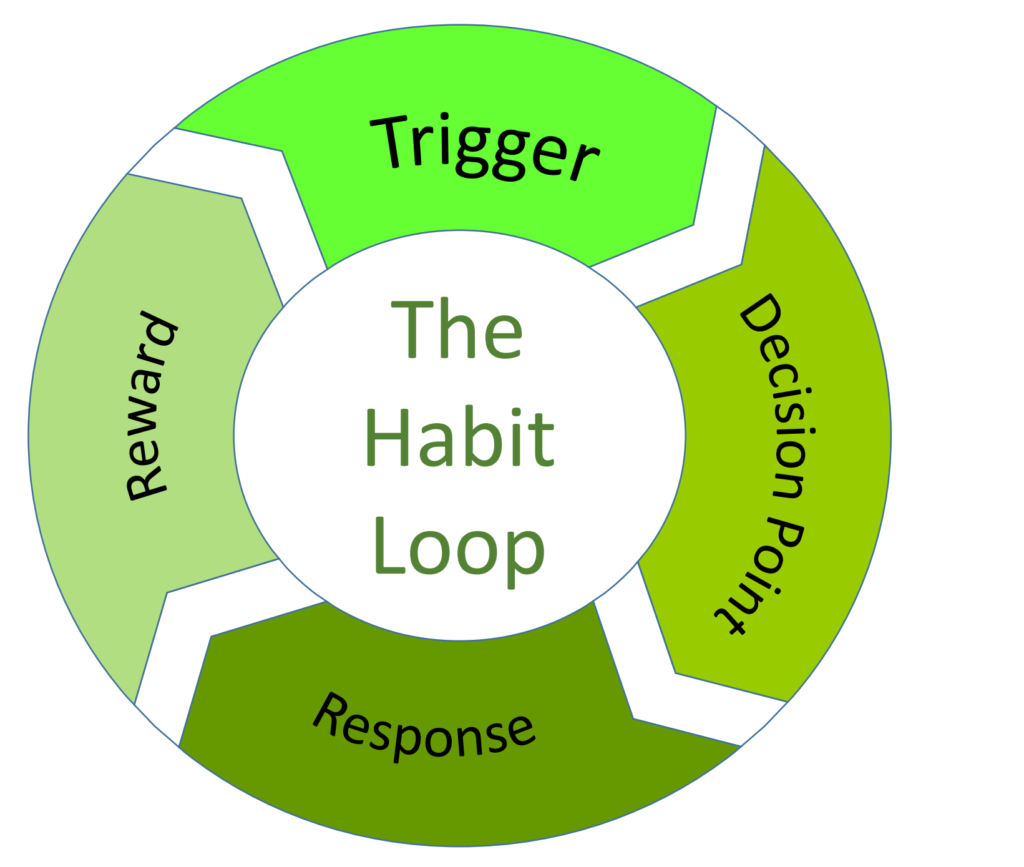Over the past few decades, there has been a general consensus that there is one good way to set goals.
But current thinking is moving away from this old idea and using updated science knowledge to make it more likely to reach those targets you set for yourself. The answer: use systems to help you achieve your goals.
Goal Setting
The first iteration of goal setting began because many people set unspecific goals that were as useful as an anchor to stop a paper aeroplane.
-
- Make more money
- Get fitter
- Find my true love
- Stop being disorganised
These goals suffer from being very woolly and generalised. Why is that so problematic? It’s not difficult to see that with a goal like ‘get fitter’, it’s difficult to know what steps you need to take to reach this goal and how do you know when it has been achieved. Just by doing one 20 minute job, you are already fitter than you were! So is that goal achieved?
The Old Ways
When I started getting interested in self-improvement, the recognised way to set a goal was to use the acronym SMART
This method makes you think deeper about the types of goals you set yourself.
So in 1981, James Cunningham, George Doran and Arthur Miller came up with the catchy title “There’s a SMART way to write management goals and objectives.” This uses the acronym SMART to help individuals set more useful goals. They did it by encouraging goals to be:
-
- Specific
- Measurable
- Achievable
- Realistic/ Relevant
- Timely
Using this mnemonic, your goal of getting fitter would now be written:
“I can run for 20 minutes without stopping by December 31st 1981”
This goal is:
-
- Specific -how long you can run for
- Measurable – you can easily determine whether you can run for 20 minutes without stopping
- Achievable – only you can tell whether this goal is achievable for you
- Realistic – it should be realistic for someone to reach a gentle jog for a whole 20 minutes
- Timely – it states when this goal is going to be assessed and gives a deadline to help motivate us.
This was adopted by professionals and individuals for many years and we can see how much more effective this method is, compared with more generalised goals.
Versions of this method have been used for decades, with excellent results both in business and in private goals.
The New Ways
Then in 2018, James Clear published his book called Atomic Habits, which introduced another paradigm shift in the goal setting process.
Atomic Habits takes the idea of SMART goals and adds a way to achieve these goals, something that the SMART goal method does not help with.
It all began when James Clear suffered a horrific injury at school, when he took an errant baseball bat to the face. Clear’s dreams of becoming a baseball player were cut short and the ideas in his book were taken from his recuperation back to health – that establishing a routine of small daily actions allowed him to reach his goals.
Essentially, Clear is saying that the goal setting process can be separated into 2 parts.
-
- Setting SMART goals
- Developing daily routines and habits that will help you reach your goals.
Let’s dig a little deeper into this process of habit forming.
Take our SMART goal from above – that:
“I can run for 20 minutes without stopping by December 31st 2018”
This goal will not be easily reached with an ad hoc approach of a few runs in the first week when motivation is high, followed by one run a week with a few missed sessions due to rain, work commitments and a Netflix account.
However, by designing a routine (or what Clear calls ‘small habits’ that can be carried out every day, will help you fulfil your dreams.
Why ‘small habits’?
James Clear uses the term ‘small habits’ to try to dissuade you from thinking that you need massive action – something that can be unsustainable in the long term – to achieve your goals.
So, rather than going for 3 fifteen-mile runs in the first week before getting injured and having to take a couple of months off, we should design small achievable habits that build momentum, self-trust and confidence.
The difference between creating atomic habits and goal setting is evident when you look at the goal of tidying your room.
Imagine a Saturday when you get up and say to yourself: I must clean my room. It’s disgusting and needs me to spend a couple of hours turning it from soiled to spotless! Your goal is ‘to tidy my bedroom’.
However, after a few days of a busy work schedule, coupled with family, and all the other things life throws your way, you find your room is once again a pigsty!
However, Clear is saying that if we employ habits – a routine that allows us to put our clothes, books and all the other detritus away after each use, our room will never be messy again. We will never need to set ourselves the goal of ‘tidy my room’ because everything has a place and is always put there. This is an example of employing a system over goal setting.
This method of creating small habits can be summarised by 4 distinct steps.

1. Cue:
This is where you utilise your brain’s ability to use habits you already have to build a new habit around. This is a process Clear calls ‘habit stacking’. Say you want to build a new get fit habit. Your commute between work and home passes a gym. So you make sure your sports kit is in the car, and at least once a day (or whatever routine you decide to set for yourself) you will go into the gym when you pass it and do at least 20 minutes of cardio.
Or perhaps you want to save money for a holiday. You can set up an app that will round up your spending to the nearest pound, putting the excess into a savings account. Now, every time you spend, you save!
The trick here is to make it obvious. Use everyday habits (like making dinner, watching T.V. or even going downstairs) to provide a stimulus for a new habit.
This step helps us circumnavigate the problem of motivation, as we use environment, rather than ever-diminishing will-power to instigate our new habits.
2. Decision Point:
This is the point where you usually make an unconscious, unhealthy decision. You are tired so you watch T.V. You are hungry so you eat a chocolate bar.
But if you can break that cycle at this point and make a conscious, healthy decision, you can begin to develop a new habit literally ‘on purpose’.
Try to link your new habit with an attractive opportunity. For example, you might want to schedule a trip to the coffee shop to treat yourself to your favourite large, skinny chokka-mocha frothy cappuccino every time you go for a run on the beach. This feedback loop rewards and reinforces an unfamiliar and possibly less motivating habit.
James Clear calls this linking step ‘temptation bundling’ and allows us to make our habits sticky.
3. Response:
This step focuses on ‘small actions’ that are repeatable rather than perfect. And repeatable means being in line with the law of least effort. We are genetically disposed to find the path of least resistance and we can employ this to help us build our habits. Design small steps to be very small and your brain will naturally plump for the easier of two choices – the easier one being the habit you wish to incorporate into your life.
Once you have these small-step actions in place, you will find it much easier to achieve daily progress towards your goals. The trick is to plan to remove as much friction as possible so that you naturally tend towards action.
If you know that you have trouble making these choices day in, day out, there is something psychologists call a ‘commitment device’. This is where you make one big decision to stop you being tempted into making the wrong decisions on a daily basis. Have a look at this article on domino decisions if you want to find out more.
4. Reward:
Our brains love quick wins. It’s the dopamine hit of the chocolate bar, the episode of EastEnders or the extra gin and tonic! We are designed to naturally veer towards the short-term benefits, even if these are diametrically opposed to our long-term goals. This is why bad habits are so difficult to resist. Their rewards are felt immediately and consequences postponed. In contrast, good habits are often have consequences that are felt immediately (like resisting that mouth-watering chocolate brownie), whilst the benefits are delayed (losing weight over the month)
To counteract this, you need to discover methods to give you an immediate reward for having completed a ‘good habit’. How do you achieve this? Habit trackers, healthy treats and some ‘me-time’ doing something that brings you joy and renews your energy levels are excellent possibilities.
Conclusion
Having well-defined SMART goals is an excellent way to make lasting changes in your life. However, employing routines and systems, such as the ones defined by James Clear in Atomic Habits, makes it infinitely more likely that you will reach those goals without experiencing too much pain, set back or burn-out.
Find out more with Rich Roll Podcast’s interview with James Clear.
Feel free to check out our guide to gaining momentum towards your goals, here:
And we’ve an article on: the 10 reasons why you should use a habit tracker.
You may also want to download our free action planner here
Which of these techniques do you think you could apply to your life? Can you define your Next Few Steps you can use immediately?
Let us know what systems or routines you use regularly that have made a difference to your productivity in the comments section below.

